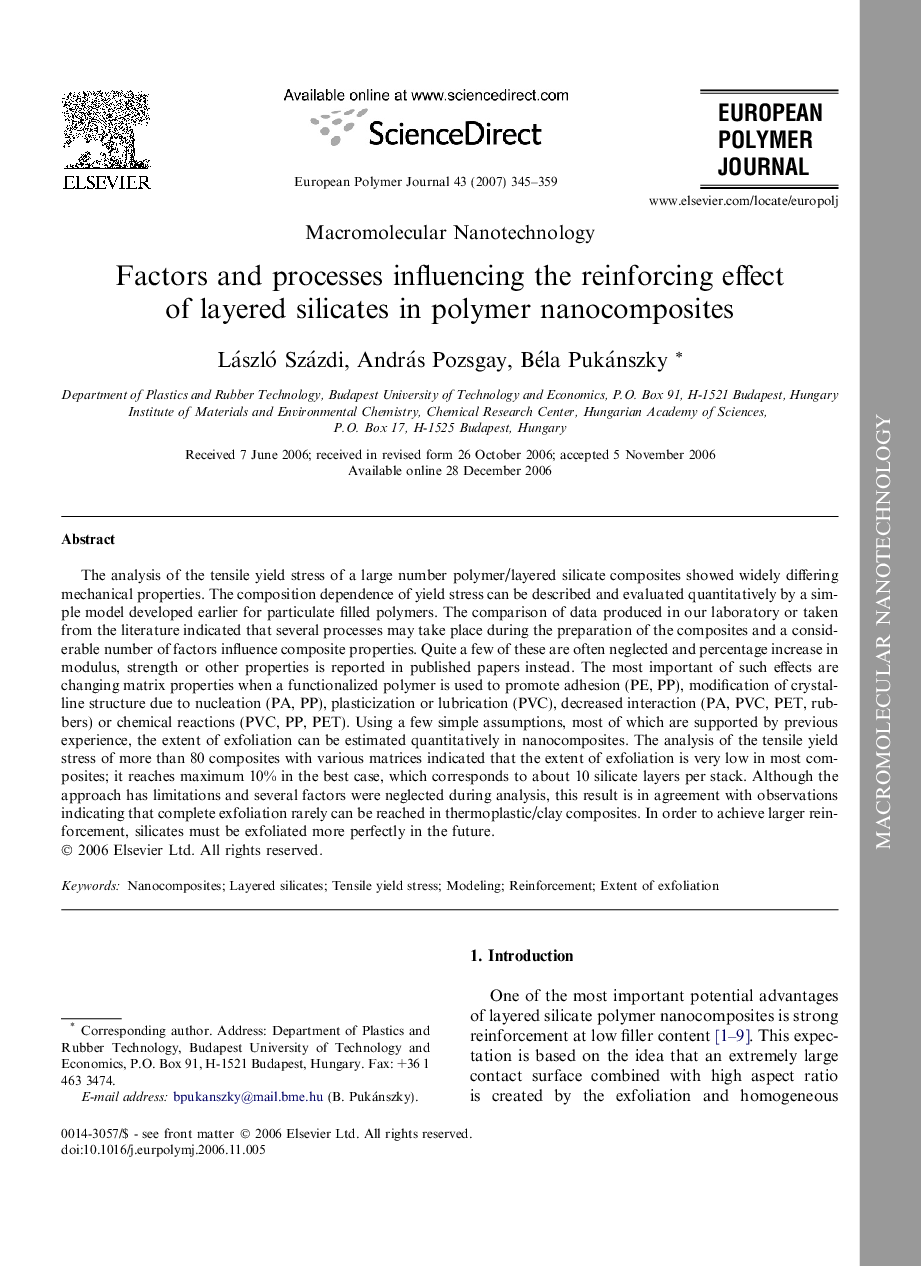| Article ID | Journal | Published Year | Pages | File Type |
|---|---|---|---|---|
| 1403734 | European Polymer Journal | 2007 | 15 Pages |
The analysis of the tensile yield stress of a large number polymer/layered silicate composites showed widely differing mechanical properties. The composition dependence of yield stress can be described and evaluated quantitatively by a simple model developed earlier for particulate filled polymers. The comparison of data produced in our laboratory or taken from the literature indicated that several processes may take place during the preparation of the composites and a considerable number of factors influence composite properties. Quite a few of these are often neglected and percentage increase in modulus, strength or other properties is reported in published papers instead. The most important of such effects are changing matrix properties when a functionalized polymer is used to promote adhesion (PE, PP), modification of crystalline structure due to nucleation (PA, PP), plasticization or lubrication (PVC), decreased interaction (PA, PVC, PET, rubbers) or chemical reactions (PVC, PP, PET). Using a few simple assumptions, most of which are supported by previous experience, the extent of exfoliation can be estimated quantitatively in nanocomposites. The analysis of the tensile yield stress of more than 80 composites with various matrices indicated that the extent of exfoliation is very low in most composites; it reaches maximum 10% in the best case, which corresponds to about 10 silicate layers per stack. Although the approach has limitations and several factors were neglected during analysis, this result is in agreement with observations indicating that complete exfoliation rarely can be reached in thermoplastic/clay composites. In order to achieve larger reinforcement, silicates must be exfoliated more perfectly in the future.
